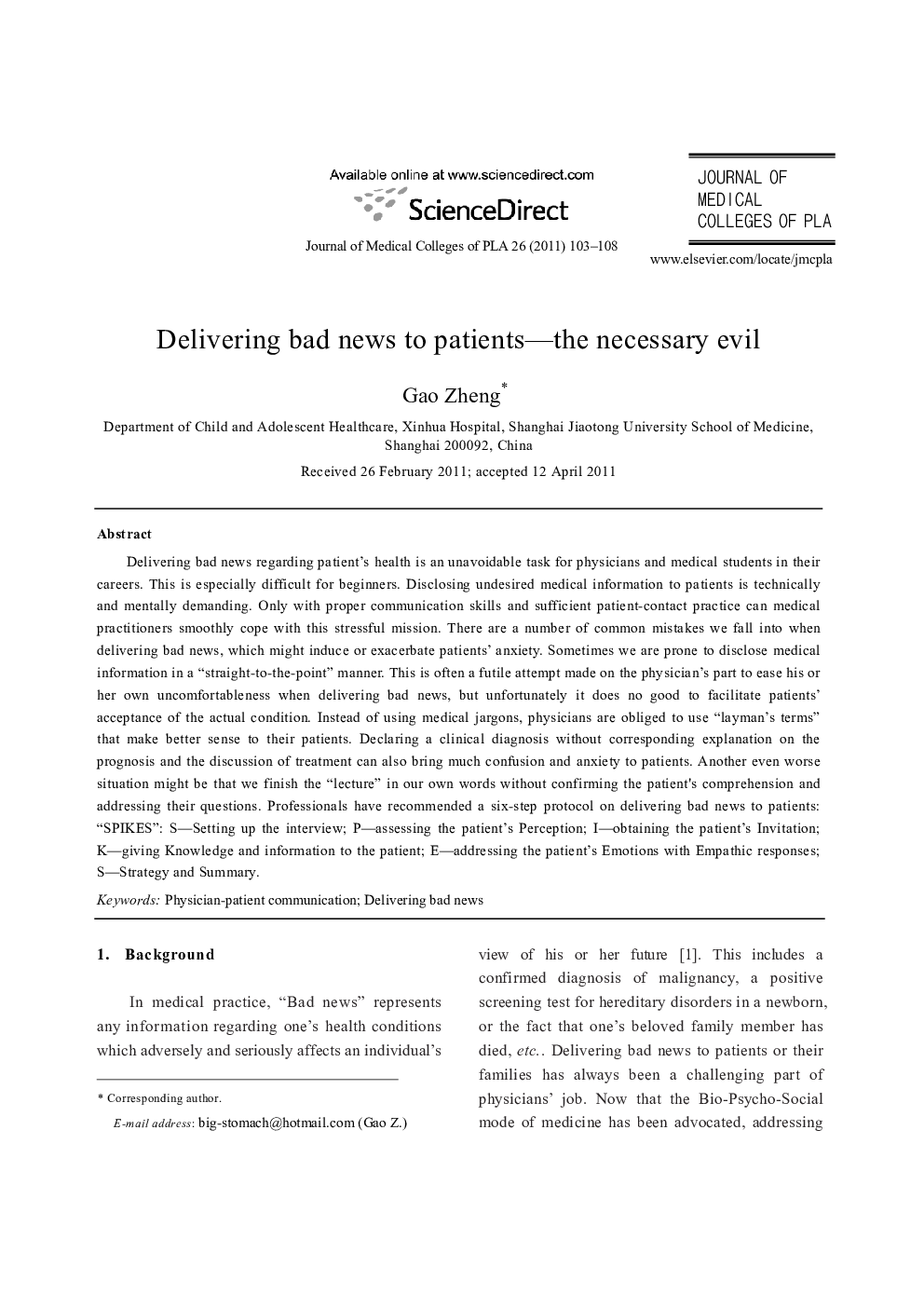| Article ID | Journal | Published Year | Pages | File Type |
|---|---|---|---|---|
| 3482677 | Journal of Medical Colleges of PLA | 2011 | 6 Pages |
Delivering bad news regarding patient's health is an unavoidable task for physicians and medical students in their careers. This is especially difficult for beginners. Disclosing undesired medical information to patients is technically and mentally demanding. Only with proper communication skills and sufficient patient-contact practice can medical practitioners smoothly cope with this stressful mission. There are a number of common mistakes we fall into when delivering bad news, which might induce or exacerbate patients' anxiety. Sometimes we are prone to disclose medical information in a “straight-to-the-point” manner. This is often a futile attempt made on the physician's part to ease his or her own uncomfortableness when delivering bad news, but unfortunately it does no good to facilitate patients' acceptance of the actual condition. Instead of using medical jargons, physicians are obliged to use “layman's terms” that make better sense to their patients. Declaring a clinical diagnosis without corresponding explanation on the prognosis and the discussion of treatment can also bring much confusion and anxiety to patients. Another even worse situation might be that we finish the “lecture” in our own words without confirming the patient's comprehension and addressing their questions. Professionals have recommended a six-step protocol on delivering bad news to patients: “SPIKES”: S—Setting up the interview; P—assessing the patient's Perception; I—obtaining the patient's Invitation; K—giving Knowledge and information to the patient; E—addressing the patient's Emotions with Empathic responses; S—Strategy and Summary.
